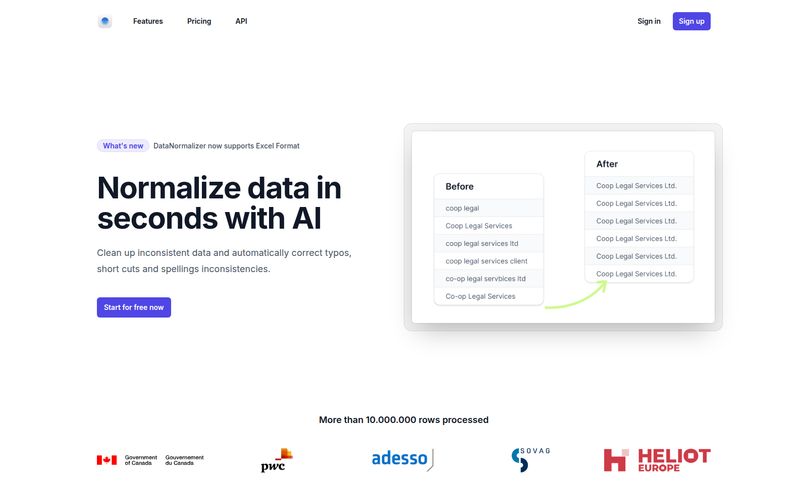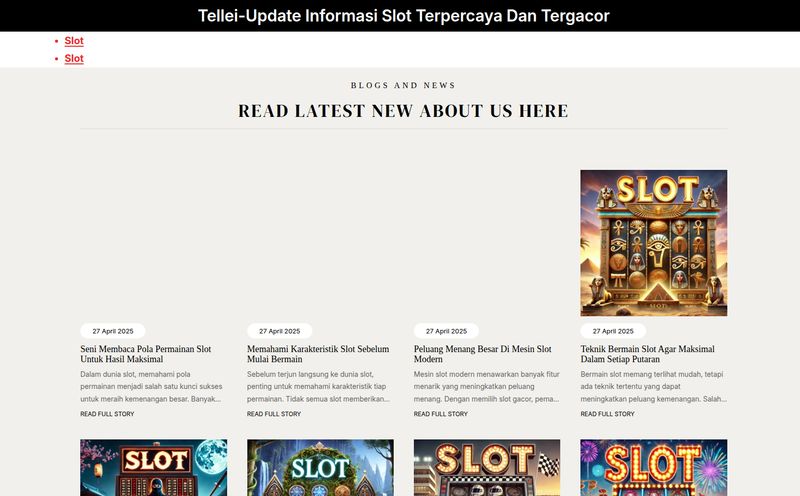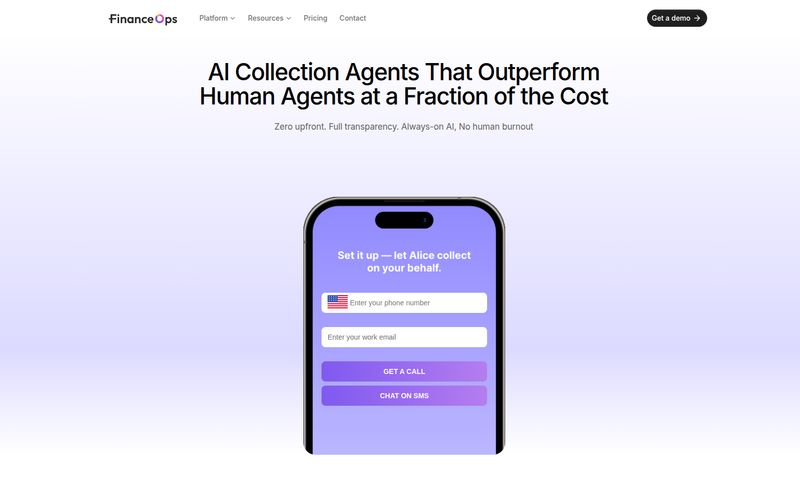If you’re building in the Web3 space, you know the data situation is… chaotic. It's a wild west of wallet addresses, transaction hashes, and smart contract interactions scattered across different chains. Trying to figure out who your actual users are, what they're doing, and how to keep them engaged can feel like trying to herd cats. In a vacuum. During a meteor shower.
For years, we've been duct-taping solutions together. A bit of Etherscan here, some Dune dashboards there, maybe a custom script if you've got a dev with some spare time (ha!). It gets the job done, sort of, but it’s clumsy. It doesn't give you the full picture.
So when I heard about a platform called DeepEyes, my interest was piqued. The promise? An all-in-one Web3 data analytics platform that uses AI to make sense of the mess. It claims to merge on-chain and off-chain data to give you actual business intelligence. The kind of stuff that Web2 companies have had for ages with tools like Google Analytics and Mixpanel.
But, and this is a pretty big 'but', as I sat down to write this, I hit a snag. A rather large, Cloudflare-shaped snag. More on that later.
So What Exactly is DeepEyes Supposed to Be?
Putting aside the current website issues, let's talk about the concept, because it's a strong one. DeepEyes positions itself as the business intelligence (BI) layer that most Web3 projects are desperately missing. Instead of just seeing raw transaction data, the goal is to translate that into actionable insights for growth.
Think about it. You’re not just seeing that Wallet 0xABC sent 1 ETH to Contract 0xXYZ. You’re seeing that 'User 123', who also follows you on Twitter and is in your Discord, just minted your NFT, and is part of a cohort of users who tend to sell within 7 days. See the difference? That's the holy grail right there.
The platform is built to combine that crunchy, public on-chain data with your own private, off-chain data—like info from your CRM, social media, or product database. This creates a unified view of your customer, something that's been incredibly difficult to achieve in a world of anonymous wallets.

Visit DeepEyes
The Core Features That Caught My Eye
A tool is only as good as its features, and DeepEyes seems to have a pretty extensive list. I won't bore you by listing every single one, but a few things really stood out to me as a long-time traffic and data guy.
More Than Just Dashboards
Sure, it has ready-to-use dashboards, which is great for getting a quick overview. But the real power seems to lie in the customization. The ability to create tailor-made reports means you're not stuck with someone else's idea of important metrics. Every project is different, and your analytics should reflect that. This suggests it’s built for both the startup that needs quick insights and the enterprise that needs to get incredibly specific.
The AI Assistant and Augmented Analytics
This is where things get interesting. DeepEyes touts an AI Assistant and 'augmented analytics'. Buzzwords? Maybe. But the idea is that the platform doesn't just show you data; it helps you interpret it. The AI can supposedly spot trends, identify anomalies, and even suggest what you should look at next. For a small team without a dedicated data scientist, that's huge. It's like having a junior analyst on staff, tirelessly sifting through data 24/7.
Getting Granular with User Behavior
I was genuinely impressed by the focus on classic marketing analytics, but with a Web3 twist. We’re talking about:
- Customer Profile Mapping: Linking wallet activity to actual user profiles.
- Fundamental Analytics: This includes Cohort Analysis (how do users from January behave differently from users from March?), Funnel Analysis (where are users dropping off in your dApp?), and Journey Analysis (what's the typical path a user takes from discovery to becoming a power user?).
This is the stuff that separates projects that just launch a token from projects that build a sustainable ecosystem.
For the Crypto Detectives
Okay, this part is just cool. Features like Smart Money Following and Exploiter Tracing turn the platform from a simple BI tool into an intelligence-gathering machine. You can track what the most successful wallets are doing or investigate a security breach by tracing the flow of stolen funds. It's a powerful addition that speaks to the unique security and financial dynamics of the crypto world.
The Good, The Bad, and The Unavailable
No tool is perfect, and from what I can gather, DeepEyes is no exception. Based on the information available, here's my breakdown.
The biggest pro is obvious: it simplifies an incredibly complex problem. Building an in-house analytics solution that does all this would cost a fortune and take months, if not years. DeepEyes offers a potential shortcut, a way to get sophisticated insights without a massive data engineering team. The combination of on-chain data, off-chain data, and an AI layer is a powerful trifecta.
On the flip side, one potential issue is that tapping into the most advanced features might require some technical chops. The documentation mentions SQL queries for certain customizations. That's not a dealbreaker for everyone, but it does mean it might not be a purely 'plug-and-play' solution for a completely non-technical founder. And then there's the pricing…
Let's Talk Pricing... Or Not
And here we have my biggest pet peeve in the B2B software world. The pricing for DeepEyes isn't publicly listed. Instead, you have to 'Book a Demo'.
You know the drill. It usually means the price is high, tiered, and customized based on your needs. It’s not necessarily a bad thing—enterprise software often works this way—but it lacks transparency. You can't just quickly see if it fits your budget. My educated guess? This is not going to be a cheap tool. It's likely aimed at well-funded projects and established companies moving into Web3, not the solo dev building a side project.
So, What's Up with the Website?
Now, let's circle back to the elephant in the room. As of this writing, the deepeyes.io website is down, showing a Cloudflare Error 522: Connection timed out. In plain English, this means Cloudflare (the service that helps protect and speed up websites) can't get a response from the DeepEyes server.
What could this mean? It could be anything, really. Temporary server maintenance. A technical glitch. The team could be heads-down pushing a major update. Or it could be a sign of bigger problems. It's impossible to say for sure. But it's a stark reminder of the volatility in the tech space. It definitely puts a damper on my ability to give it a full-throated endorsement right now.
Who is DeepEyes Actually For?
Assuming the platform is active and working as described, it seems ideal for a few key groups:
- Web3 Project Managers and Marketers: To understand user acquisition, retention, and behavior.
- dApp and GameFi Developers: To optimize their product funnels and user experience.
- Crypto VCs and Analysts: To perform due diligence and track the performance of portfolio companies.
- Security Teams: To leverage the exploiter tracing and smart money features.
It’s for anyone who has graduated beyond just wanting to know their token price and wants to build a real, data-driven business on the blockchain.
Frequently Asked Questions
- What is DeepEyes?
- DeepEyes is a Web3 data analytics platform designed to provide business intelligence by combining on-chain and off-chain data. It uses AI to help projects understand user behavior and drive growth.
- How does DeepEyes use AI?
- The platform uses an AI Assistant and augmented analytics to automatically identify trends, anomalies, and important patterns in your data, making complex analysis more accessible even without a dedicated data scientist.
- Is DeepEyes suitable for non-technical users?
- While it offers ready-to-use dashboards that are likely user-friendly, some of the more advanced customization features may require technical knowledge, such as writing SQL queries.
- How much does DeepEyes cost?
- The pricing for DeepEyes is not publicly available. You need to book a demo with their team to get a quote, which suggests it is likely an enterprise-level tool with custom pricing.
- Can I track specific wallets with DeepEyes?
- Yes, features like 'Smart Money Following' and 'Exploiter Tracing' are specifically designed for tracking the activity of certain wallets and understanding on-chain financial flows.
- Why is the DeepEyes website down?
- Currently, the website is showing a Cloudflare 522 error, which means its server is not responding. This could be due to temporary maintenance, a technical issue, or other problems. The exact reason is unknown.
Final Thoughts
On paper, DeepEyes sounds like a dream tool for anyone serious about building in Web3. The industry has been crying out for a solution that can demystify blockchain data and turn it into something a marketer or a CEO can actually use. The feature set is impressive, touching on everything from user behavior analytics to on-chain security.
But a tool is only useful if you can, well, use it. The opaque pricing is a hurdle, and the current website outage is a major red flag. I’m optimistic and genuinely hope it's just a temporary blip. The potential is massive. For now, I'm keeping DeepEyes on my watchlist. It has the chance to be a category-defining product… if it can stay online and deliver on its very big promises.
Reference and Sources
- Understanding Cloudflare Error 522
- State of Crypto Report by a16z crypto (for context on the need for better analytics)
- Dune Analytics (a popular competitor in the space)



